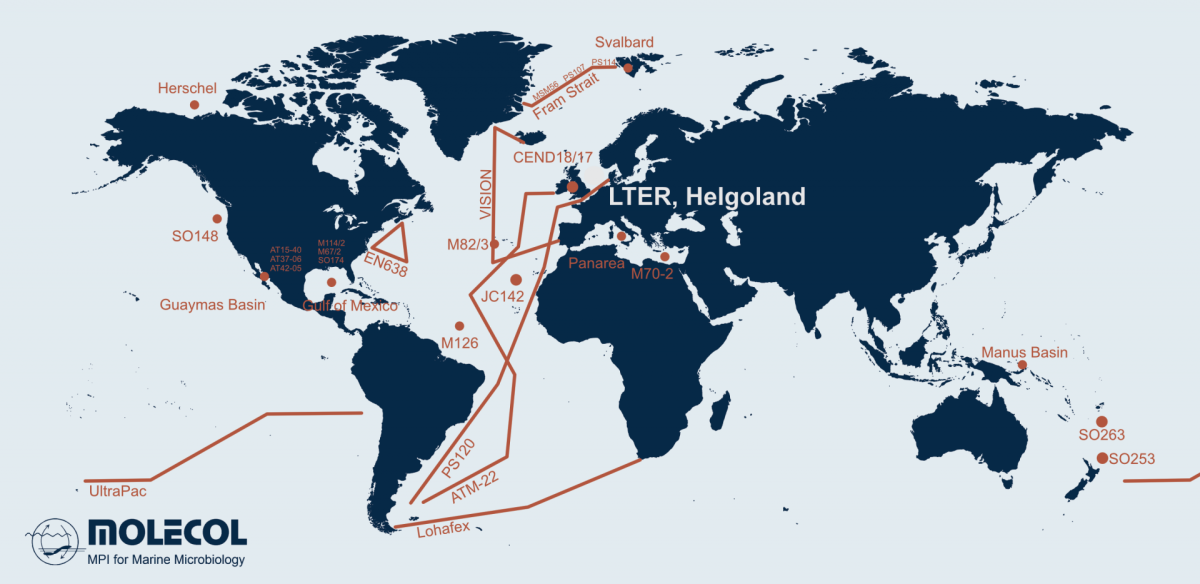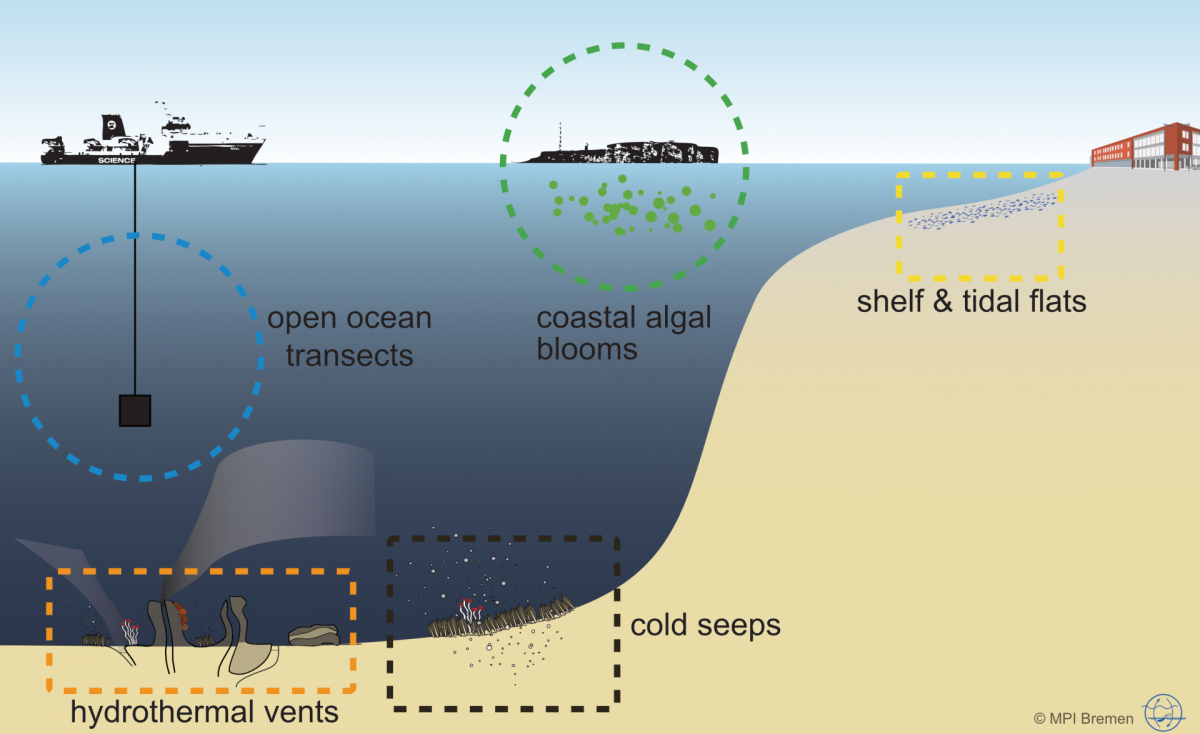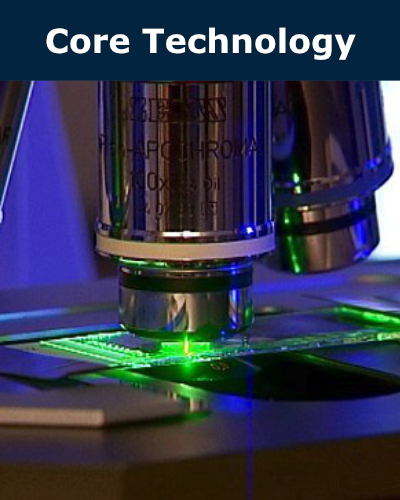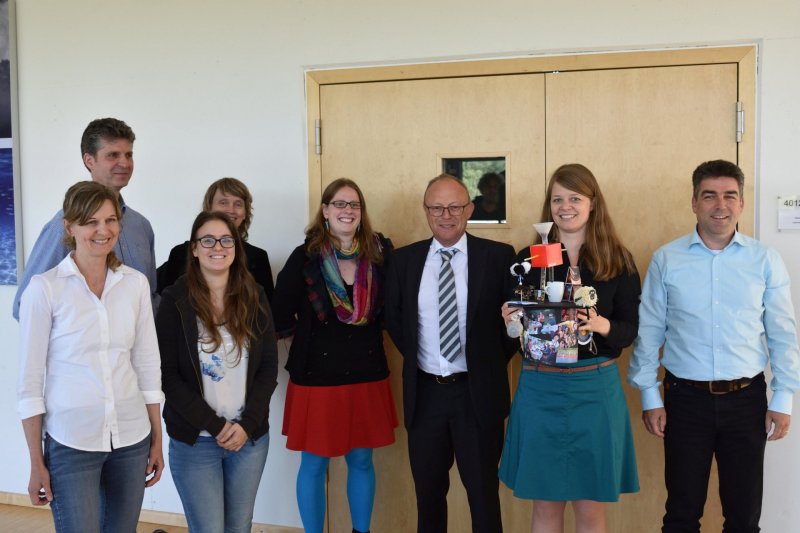- Molecular Ecology Group
Department of Molecular Ecology
Groups
Projects
Managing Director
Department of Molecular Ecology
MPI for Marine Microbiology
Celsiusstr. 1
D-28359 Bremen
Germany
|
Room: |
2221 |
|
Phone: |

Assistance
Department of Molecular Ecology
MPI for Marine Microbiology
Celsiusstr. 1
D-28359 Bremen
Germany
|
Room: |
1345 |
|
Phone: |

News
"Congratulations to Anissa Grieb on the successful defense of her doctoral dissertation" [28.06.19]
Inspiration and focus of our department
Long before plants and animals had evolved, single-celled microorganisms have shaped Earth and ever since they remained essential for the habitability of our blue planet. Whereas only thousands of species of Bacteria and Archaea have been described by cultivation-based methods, we are identifying millions with molecular techniques. Today high throughput sequencing is providing ample data on species richness and evenness, yet quantification of the individual species remains difficult. Here we apply fluorescence in situ hybridization for the microscopic identification of single microbial cells and their localization in the environment. Functional assays, i.e. tracing the uptake of substrates by single cells, together with comparative genome analyses allow us to deduce the ecological role and biochemical potential of not yet cultivated Bacteria and Archaea. Beyond quantitative descriptions of microbial communities of individual samples, we use long term datasets to predict the functional niches and annual recurrence of marine microbes. Besides a full taxonomic description, the predicted niches are confirmed by isolation and physiological characterisation of strains.

Uncultivated microbes in need of their own taxonomy
Taxonomy encompasses the identification, classification and nomenclature of organisms. As such, taxonomy is a prerequisite for ecology. Only based on accurate taxonomic concepts and methods, can the diversity and composition of complex microbial communities be accurately described and monitored. Our department has a long tradition of developing and applying new taxonomic methods. We have pioneered the in situ identification, quantification and localization of not-yet cultivated bacteria and archaea by fluorescence in situ hybridization (FISH) with rRNA-targeted oligonucleotide probes (Amann et al. 1995; Amann & Fuchs 2008). We have a long-standing collaboration with Wolfgang Ludwig and Ralf Westram, the main developers of the ARB program that is widely used for the reconstruction of 16S rRNA-based phylogenetic trees and for the design of oligonucleotide probes. Emerging from that program, we also have long been the home of the much-used, curated 16S rRNA database SILVA (Quast et al. 2013; Yilmaz et al. 2014). This has now been transferred to the Leibniz Institute DSMZ-German Collection of Microorganisms and Cell Cultures.
Since the majority of microorganisms have not yet been cultivated, there was a need for thresholds to assess whether their 16S rRNA fingerprints indicate the existence of new species, genera, families, orders, classes or even new phyla. We contributed to widely used standards of 16S rRNA-based classification (Yarza et al. 2014). Today, the genomic revolution is enabling very detailed descriptions of new taxa without cultivation, and it is evident that order must be brought to the rather uncontrolled alphanumerical naming of "novel" (Konstantinidis et al. 2017). Single cell genomics and/or metagenome-assembled genomes, often combined with single cell identification by FISH, discloses the true diversity of microorganisms, which is breathtaking, yet certainly not endless (Amann & Rossello-Mora 2016). Currently, others and we have identified a pressing need to do proper taxonomy of abundant and functionally important clades of environmental bacteria and archaea. As such, we have recently described several new marine taxa including the species Candidatus Prosiliicoccus vernus (Francis et al. 2019) and the genus Candidatus Abditibacter (Grieb et al. 2020). However, since the rank of Candidatus is preliminary and the nomenclature lacks priority, others and we are convinced that genomic information needs to be accepted as type material for the permanent description of novel microorganisms (Konstantinidis et al. 2020). Ecologists and taxonomists require a roadmap for naming uncultivaed Archaea and Bacteria (Murray et al. 2020) that is compatible with the current Code of Nomenclature requiring live pure cultures as type material. We believe that this will not hinder the enrichment and cultivation work of others and us that is more needed than ever. We now not only know that something is out there but also can predict what it is doing, characterising its ecology while we wait for cultivation efforts to provide a more detailed inspection. These "ghosts" have names and we know their genomes.

Diversity, visualisation and cultivation
One of the primary questions of ecology is 'who or what is there?'. In marine microbial ecology, we typically employ high-throughput sequencing of the 16S rRNA gene to provide a window into the diversity of the microbial community. From this, we can determine the key microbial taxa present and begin to formulate hypotheses about ecological processes taking place. More recently, a significant advancement in long-read sequencing technology, with the advent of the PacBio Sequel II platform, now allows us to sequence the genetic material from environmental populations (metagenomics) and simultaneously retrieve full-length 16S rRNA genes. In comparison to short 16S rRNA gene amplicons, these full-length sequences can be used in more robust and accurate phylogenetic analyses.
The next fundamental component of ecology is assessing the abundance of a specific population in the environment. Trivially speaking, the more individuals there are, the more important they are for the ecosystem and the higher the impact on the nutrient cycle, resource exploration and metabolic interactions. This is where our method FISH is an indispensable tool for the enumeration of taxonomically well-defined microorganisms. As most microbes lack a conspicuous morphology, the only reliable marker to distinguish between them is the ribosomal RNA molecule, which is highly conserved and abundant in every organism. Using small fluorescently labelled oligonucleotides complementary to the rRNA, we can tailor probes specific for the taxa of interest to visualize and count them by epifluorescence microscopy. Besides a numerical quantification, FISH provides a clue about cellular structures and physical interactions with other microbes. We can use high-resolution microscopy like Confocal Laser Scanning Microscopy (CLSM) and STimulated Emission Depletion (STED) microscopy to study intracellular properties or the uptake of, e.g., substrates. Using FISH and high-resolution microscopy, we can determine accurate cell-sizes and biovolumes of uncultivated microbes.
Though we can obtain ample amounts of information about the ecology of microorganisms from environmental samples, we ultimately still require pure cultures or enrichments in the lab. Cultivation is still, in most cases, the only way to experimentally verify predictions and hypotheses formulated from genomic sequence information. However, the isolation of marine microorganisms can be a challenging task, as it is difficult to recreate the natural environment and specific conditions required for a population to grow. Therefore, we use liquid mediums and enrichments along with physical separation of individual cells through dilution and molecular identification methods (in house developed specific PCR and in situ hybridisation probes) to isolate abundant microbes from natural communities. Once a strain is in pure culture, the source is unlimited and physiological traits and individual enzymes can be studied.



